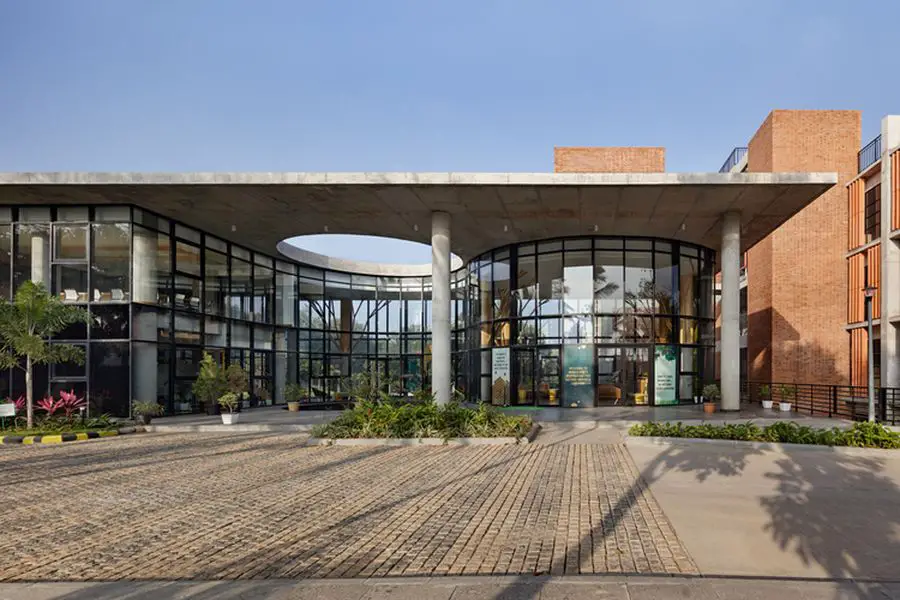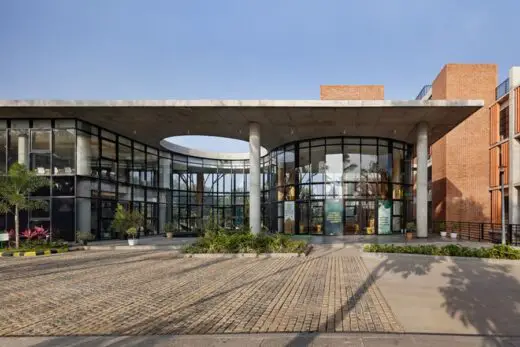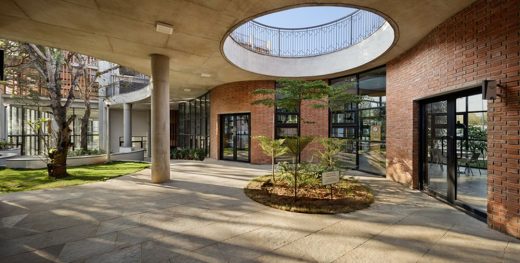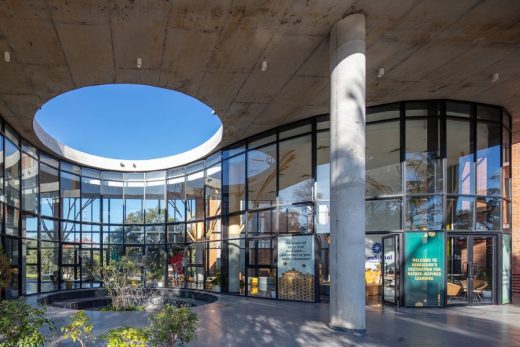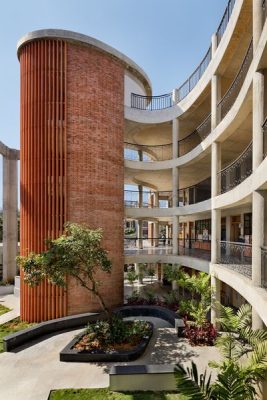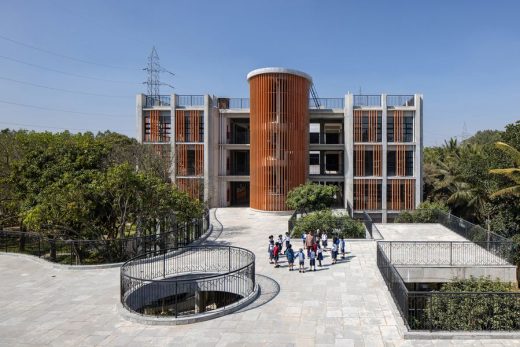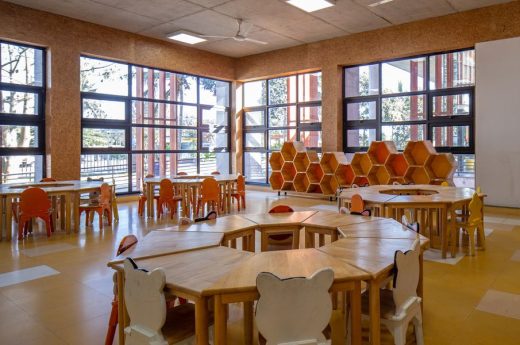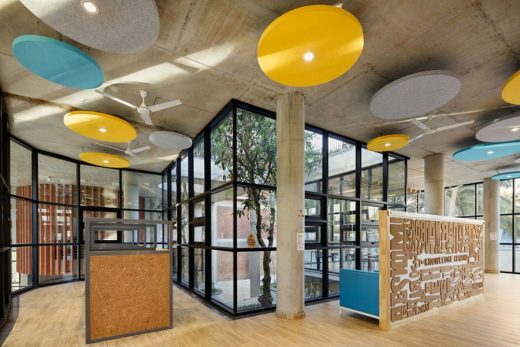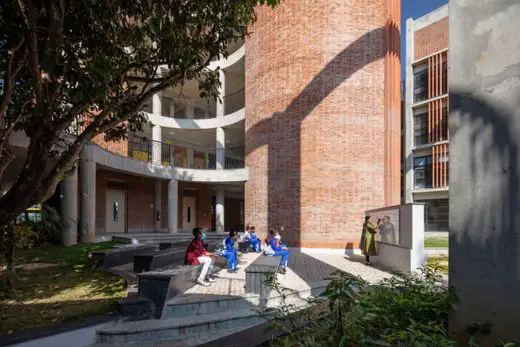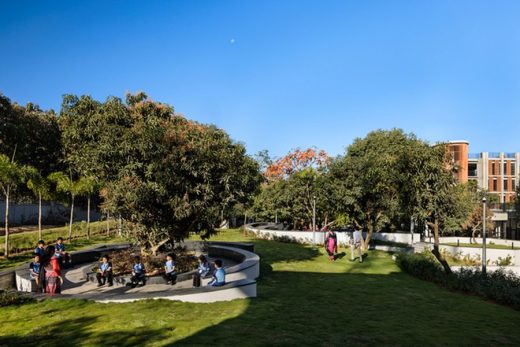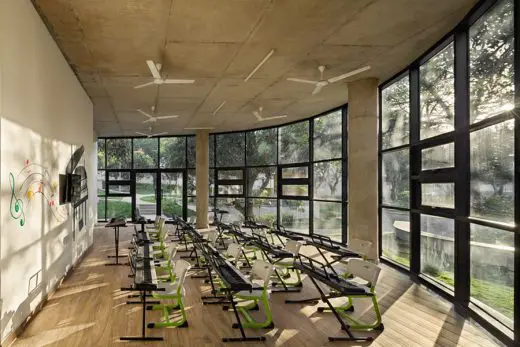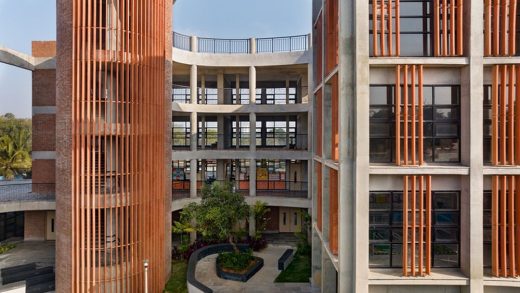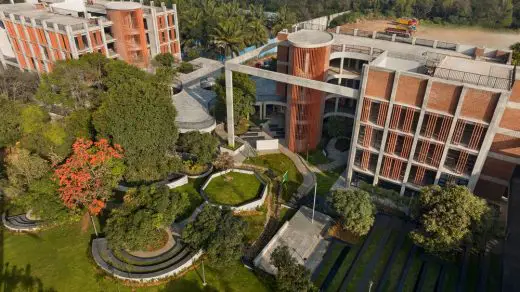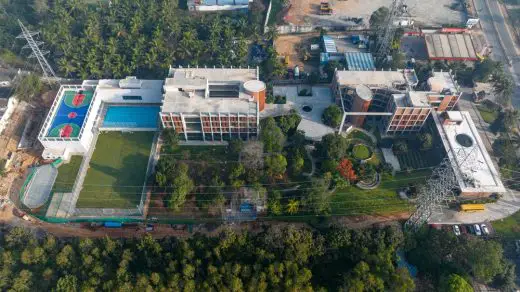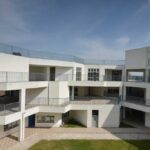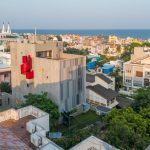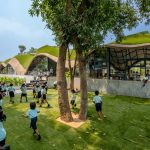Euro School Bannerghatta, Bengaluru educational building images, New Indian education architecture design
Euro School Bannerghatta in Bengaluru
post updated 13 February 2024
Design: Vijay Gupta Architects (VGA)
Location: Bengaluru, Karnataka, India, South Asia
Images by Andre Fanthome
6 September 2023
Euro School Bannerghatta, Bengaluru, India by VGA
Imbibing Nature into the built morphology
In today’s hyper-online age, children have meager interaction with the natural environment, spending more time on their screens than out in the open. The issues the world faces today – of deteriorating resources, and the looming threat of the climate crisis demand young and future generations that are conscious of their impact on the world. A viable model for education then, that liberates children from the confines of closed spaces and ensures their holistic development is worth exploring, and has immense potential for cultivating an understanding of and respect for nature.
Framed by the lush Bannerghatta National Park as its backdrop, the 20,000 sq mt site of Euro School Bannerghatta creates an environment for children to move around freely, explore and interact with each other and their surroundings. The design uses the vegetation and natural features of the site to its advantage, with trees becoming the focal points within the organic building profile. The architecture’s conceptual underpinnings explore the immense potential institutional architecture has for cultivating an understanding of and respect for nature in children, thus aiding their holistic development.
The built mass of the design has been placed along the northern periphery of the site, with a large central green space connecting the building blocks into one coherent whole. The existing trees emerge within the structure in a network of transitional spaces, growing out of the building in courtyards between classroom clusters, as spill-over spaces from activity zones, as green edges to walkways, and as visual respite for congregational spaces.
A dialogue between the natural and manmade
The connection between the built fabric and the central green space is tectonic at the ground level, with all the activity spaces opening directly into this area. At upper levels, this connection is visual, with extensive glazing across the built envelope providing expansive views of the landscape. This green space includes a terraced lawn that follows the site contours, with seating ledges and nooks; and other play areas, sand pits and vegetable gardens. These interventions double as outdoor classrooms in fair weather, thus subverting the expected or traditional morphology of learning spaces.
The outdoor spaces are a fundamental part of the school’s architecture, encouraging students to observe, learn and interact with their environment. Further underscoring this idea, there is a gardening patch next to the school’s cafeteria where students can understand where the food they consume comes from by helping to take care of the garden’s plants. A restored natural water channel (swale) spans the central green space, creating a sense of fluidity in sync with the overall site, and becomes another tangible element of the students’ natural world.
This relationship between the academic blocks and the central green space allows students to experience their natural environment and built habitat as interdependent entities. The design, by amplifying architecture’s connection to nature encourages students to explore their surroundings, gaining a sense of respect for nature by shifting the modes of pedagogy into the natural realm.
An implicit understanding of nature
The consciousness towards natural motifs extends itself to the interiors with the Fibonacci series becoming an iterative motif in the interior design. For instance, the sequence is used in the divisions in the colourful panelling which add a vibrant tone to the muted material palette of concrete and glass. Other geometric fixtures and motif-based artworks also add a sense of liveliness to the space.
Similarly, the natural finds expression within the classrooms; hexagonal cells of beehives have been interpreted as classroom shelving, while fractals found in crystal formations inspire the clusters of triangular-framed lighting fixtures. On an aesthetic level, the abstraction of dandelion buds and tree foliage has been used to create overlays for glass partitions, further softening the transition between indoors and outdoors. This use of natural motifs in the interior design underscores the interdependence of the built with nature, helping students create a subliminal link to the systems of nature through design.
Addressing the growing disconnect between man and the environment
The school’s design goes beyond the service of sustainability that attempts to merely provide solutions through the rigid parameters of energy ratings and material picks. The design attempts to cater to sustainable measures through innate, pragmatic solutions,rather than relying on technology to enhance the project’s ecological efficiency.
Passive strategies such as adequate shading devices, and courtyards enable cross ventilation in the building so that comfortable interior temperatures are maintained. Moreover, the classrooms are oriented along the North-South axis to ensure there is minimal heat gain, further eliminating the need for air-conditioning. The large glazed openings of the school also ensure that the interiors are fully daylit, bringing down operational costs.
Euro School is a zero-discharge campus incorporating measures such as a rainwater harvesting plant and a sewage disposal system into its planning. Further, any water run-off from the site is discharged into the natural water swale, which ensures it is always replenished. Apart from working with the natural terrain and vegetation on site to minimally disturb the local ecology, the materials used in the building are locally sourced, such as the granite used in the flooring. Many materials have also been recycled during construction such as the GRC fins and the materials in the concrete mixture.
Architecture is constantly mediating a relationship between the natural and man-made. Yet, with the role of nature severely diminishing in our modern urban existence, how can our built environment address a growing disconnect between man and environment, engaging with the natural and fostering a consciously symbiotic relationship? By highlighting natural processes within the school campus, the design propagates sustainability by embedding it into the students’ consciousness, making it an implicit part of their lives. By conceiving of the built in harmony with nature, it cultivates in children compassion for their surroundings from an early age, which may not otherwise happen within the technology-fuelled isolation of urban life.
Euro School Bannerghatta, Bengaluru, India – Building Information
Design: Vijay Gupta Architects (VGA)
Typology: Institutional
Name of Project: Euro School
Location: Banerghatta
Name of Client: Euro School
Name of Client’s Firm: Euro School Foundation
URL: https://www.euroschoolindia.com/euroschools-admissions/bengaluru-bannerghatta-new
Principal Architect: Saurabh Gupta
Design Team: Vijay Gupta, Saurabh Gupta, Akanksha Gupta
Site Area (sq ft and sq m): 20180 sqm (217215 sqft)
Built-Up Area (sq ft and sq m): 11473.43 sqm (123500 sqft)
Start Date: January 2020
Completion Date: October 2022
Construction Cost: 50 crore
Project Fact File
PRODUCTS / VENDORS
Glazing: Saint Gobain
Flooring: Granite, Somany Tiles, K.G tiles
Furniture: HNI Godrej
Air Conditioning: Voltas
Paint: Asian
CONSULTANTS
Structural: Kamal Sabarwal
Electrical: Gagan Gupta
HVAC: Gagan Gupta
Plumbing: RKGA/ Pramod Sharma
CONTRACTORS
Structural: CICON Engineers PVt. ltd.
Civil: CICON Engineers PVt. ltd.
HVAC: Ajay Vats
Plumbing: CICON Engineers PVt. ltd.
PMC: JLL
Façade: Shobha Projects
Photographer: Andre Fanthome
Euro School Bannerghatta, Bengaluru, India images / information received 060923 from VGA
Location: Bangalore, Karnataka, India, southern Asia
Bengaluru Buildings
Contemporary Architecture in Bengaluru
Axis Pramiti – School Building, Bangalore, Karnataka, southern India
Design: The Purple Ink Studio, architects
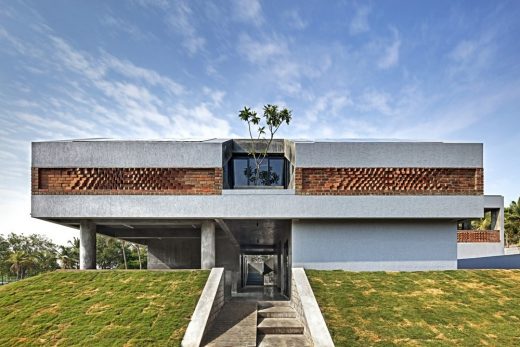
picture : Shamanth Patil J
Kanakpura School Building in Bengaluru
Bangalore Hotel + Spa
Design: Mohsin Cooper
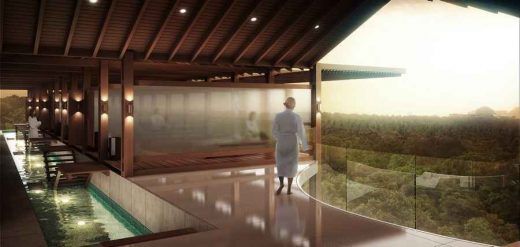
image : F10 Studios
Bangalore Hotel
Vivanta by Taj MG Road Bangalore hotel
Design: WOW Architects / Warner Wong Design
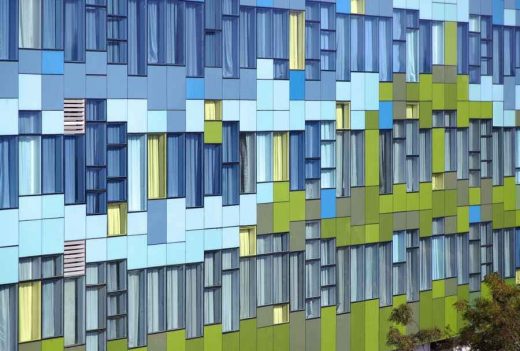
photo : Aaron Pocock Architectural Photography
Vivanta Bangalore Hotel
New Indian Houses
Best Contemporary Residences in India – recent selection on e-architect:
Dawar House, Agra, Uttar Pradesh
Architecture: Studio Archohm
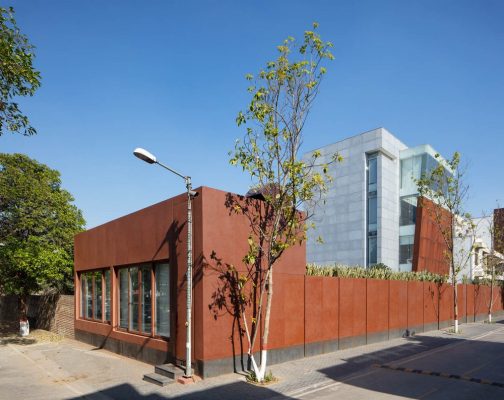
photo © Andre Fanthome
Dawar House
Ladhani House, Noida, Uttar Pradesh, northern India
Architecture: Studio Archohm
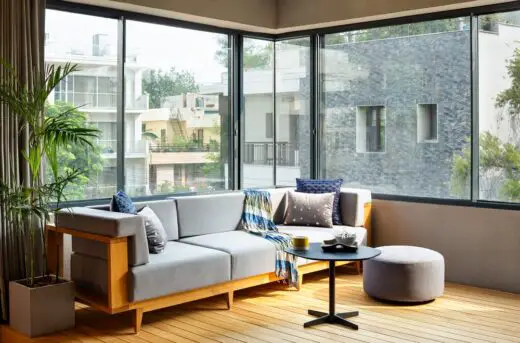
photo © André J. Fanthome
Hanging House, Noida, Uttar Pradesh
Residence 145, Chandigarh, north western India
Design: Charged Voids – led by Architect Aman Aggarwal
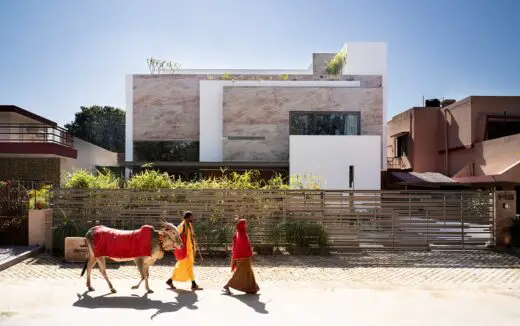
photo : Javier Callejas
Residence 145, southern Chandigarh property
Indian Architecture
Indian Architecture Designs – chronological list
New Delhi Architecture Walking Tours
Comments / photos for Euro School Bannerghatta, Bengaluru, India designed by architects Vijay Gupta Architects (VGA) page welcome.

